Categorization:Harness Component
In modern electronic devices, especially in the design of high-speed and high-frequency signal transmission, "micro-coaxial cable" and "LVDS line" are often mentioned together. Many engineers may wonder: What is the relationship between these two types of cables? Where are the differences and connections between them? Below, let's analyze from three perspectives: structural definition, application logic, and performance.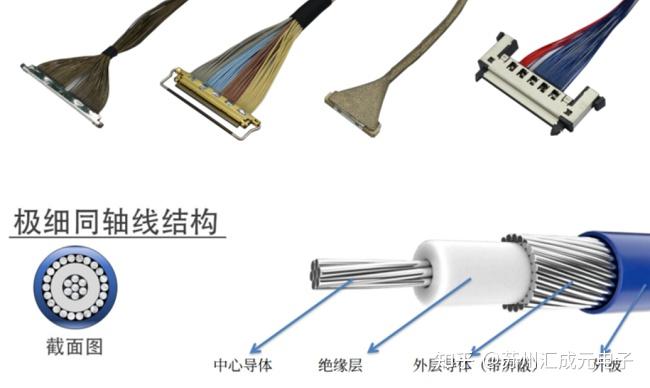
The differences in structure and definition. The ultra-fine coaxial cable assembly is a miniaturized coaxial cable structure, internally consisting of a central conductor, insulating medium, metal shielding layer, and outer sheath. Each signal line has an independent shielding layer, thus demonstrating excellent performance in terms of anti-interference and signal integrity. It is commonly used in high-precision scenarios such as camera modules, high-definition displays, and medical equipment. In contrast, LVDS is not a cable type but a signal transmission method. It transmits voltage differences through a pair of complementary conductors to cancel out external noise interference, with a typical impedance of 100Ω. It has the advantages of high-speed transmission and low power consumption, and is widely used in notebook screens, industrial image systems, and camera interfaces. Simply put, micro-coax is a cable structure, while LVDS is a signal transmission method. The two are not in opposition but exist in a complementary relationship.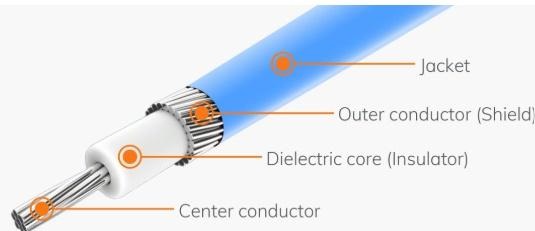
The ultra-fine coaxial cable is suitable for carrying LVDS signals. From an electrical perspective, the independent shielding structure of micro-coax effectively reduces crosstalk and EMI interference, especially in complex electromagnetic environments, where its advantages are particularly prominent. Secondly, it has strict impedance consistency control, which ensures that LVDS differential signals are phase-matched accurately and waveforms are complete during transmission. At the same time, its extremely thin wire diameter and flexible wiring enable high-density layout in thin and light devices or small spaces. These characteristics make micro-coax an ideal physical carrier for LVDS signal transmission, widely used in applications such as 4K/8K image transmission, drone image links, and medical probes.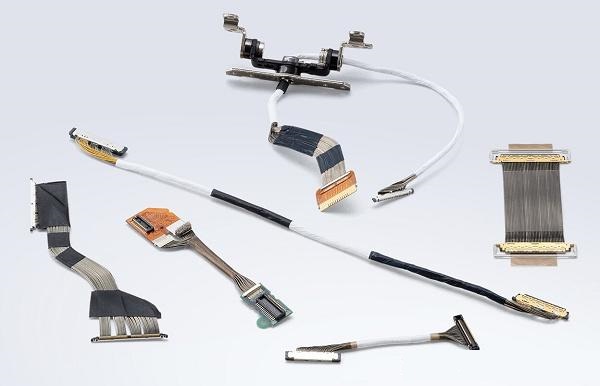
Section 3: Performance Comparison and Design Significance: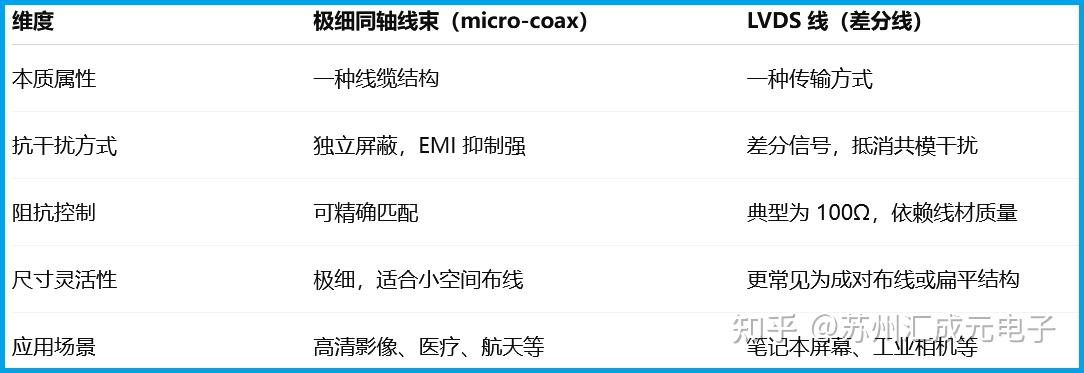
In fact, there is no comparison between the ultra-fine coaxial cable束 and LVDS lines as to which one is superior; rather, they complement each other functionally. LVDS defines the way signals are transmitted, while micro-coax provides a highly reliable physical channel. The former focuses on differential anti-interference at the electrical level, while the latter concentrates on shielding and impedance control at the structural level. When used together, they can achieve both low power consumption and high bandwidth, while also ensuring signal integrity and system stability, making them the golden partners in modern high-speed interconnect systems.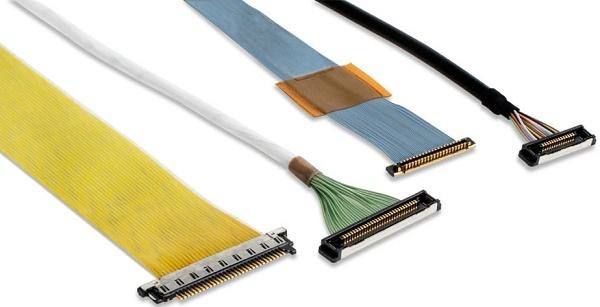
In summary, the differences between ultra-fine coaxial cables and LVDS lines lie in the structural and signal-level differences. Micro-coax, with its excellent shielding characteristics and precise impedance control, provides a reliable physical foundation for LVDS signals. It is the synergy between the two that allows for a balance between efficiency and stability in high-resolution image transmission and high-speed data links.
I am【 Suzhou Huichengyuan 】Long-term focus on the design and customization of high-speed signal cable harnesses and ultra-fine coaxial cable harnesses, committed to providing stable and reliable high-speed interconnection solutions. If you have any related needs or want to learn more, please contact:Manager Yin 18913280527 (WeChat same number)。